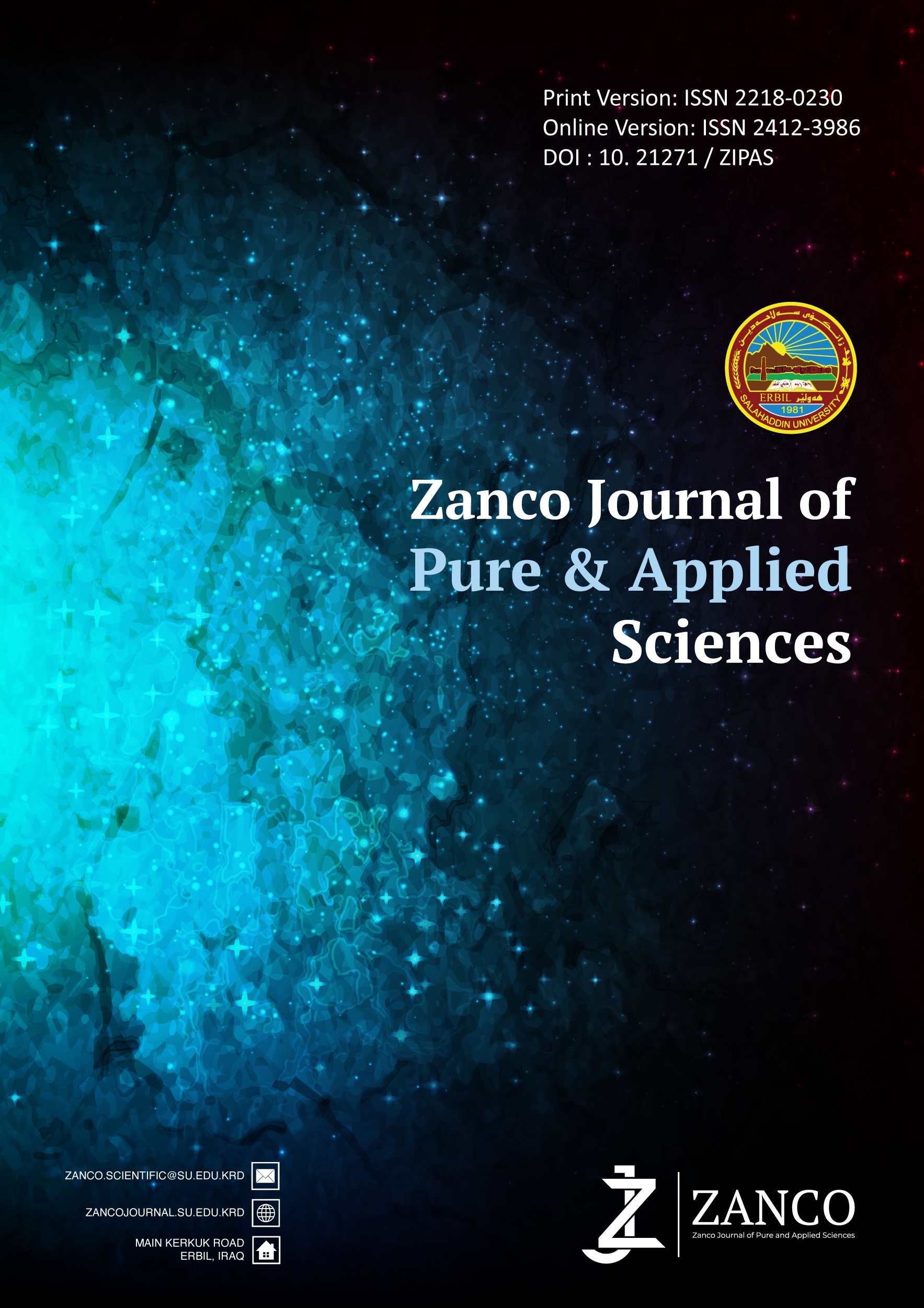Driver Behavior during All Red Interval at Signalized Intersections in Erbil City
DOI:
https://doi.org/10.21271/ZJPAS.36.2.7Keywords:
All read, clearance interval, red light violator, red light runner.Abstract
This case study investigated red light violations at urban signalized intersections in Erbil city-Iraqi Kurdistan Region. The results obtained in the study are important to improve traffic safety at signalized intersections. Field observations were conducted at six at-grade and grade separated signalized intersections which were selected in different locations in the city. Drivers’ behavior at these signalized intersections based on direct field data collection and video recording technique for the whole observed time is examined. The video recording technique is used to abstract the driver behavior traffic data during the onset of all red light. Also, some camera pictures are taken to assist studying the driver behavior while crossing the stop line after the onset of a red light. The analysis is conducted to identify the driver behavior during red light gathered from the data collected of a total of 328 violation records which are lower than the red light violation rates recorded by other studies.
The calculated red light violation rates for the 6 studied intersections ranged from 0.58 violation per 10,000 vehicles-cycle to 1.52 violation per 10,000 vehicles-cycle. The results show that average aged male and female drivers are more probable to run red lights. In addition, the male drivers have much higher tendency to run the red light than female drivers. Most red light violating drivers in Zanko and Mashtal signalized intersections are young because they are near the college town. Most of red light violations occurred during the peak hours between 8:00 a.m. to 9:00 a.m when most urban driving is done. About 95.34 % of the red light violation records are passenger cars (private and taxi). Approximately 17.38% of drivers tended to stop after onset of the red light. The drivers crossed the stop line after the onset of red light and not stopped are 76.22% within the all red interval and only 6.4% after the end of all red interval. About 51.0 % of the violators ran the red light within 2.0 seconds of its onset, while over 95.0 percent of the violators ran the red light within 4.0 seconds of its onset. The average speed of the red light violator vehicles is 34.95 kph. The most frequent vehicle speed at the time of violation is 32.14 kph. For all studied signalized intersections, 8.0 – 26 % of violating vehicles ran the red light at speeds ≤ PSL, while 74.0 – 92.0 % of violating vehicles ran the red light at speeds > posted speed limit (PSL). The number of red light violations (RLVs) are high at low and high traffic volumes but they are low for medium traffic volumes. The red light violation increases as the signalized intersection control delay value increases and it decreases as the control delay decreases. 56.3% of red light violators are straight ahead, while (43.7%) are left turn vehicles. Simple regression analysis is carried out using IBM SPSS to model the effect of elapsed time since red light onset, violating vehicle speed, traffic volume, signalized intersection control delay, and average approach speed on red light violation (RLV).
The most suitable relationship between the RLVs and elapsed time since red light onset is the fourth-degree polynomial model with a coefficient of determination R2 = 0.9931, the third-degree polynomial model for vehicle speed since red light onset with a coefficient of determination R2 = 0.9519, second-degree polynomial for the signalized intersection traffic volume counts, positive second-degree polynomial for signalized intersection control delay with a coefficient of determination R2 = 0.8493, the third-degree polynomial model for the observed mean approach speed with a coefficient of determination R2 = 0.773.
References
Al-Neami, A.H.K. EVENT- A computer program for abstraction of traffic data. Engineering Journal, University of Tikrit, 3(2). (2000).
Andrzej P. Tarko and Naredla Lakshmi Kanth Reddy, Evaluation of Safety Enforcement on Changing Driver Behavior – Runs on Red (A Two-Volume Report), TRB Subject Code:51-4 Transportation Safety Law Enforcement January 2003, Final Report, FHWA/IN/JTRP-2002/12-1, Center for Transportation Research and Education 2901 S. Loop Drive, Suite 3100 Iowa State University, Ames, Iowa 50010.
https://docs.lib.purdue.edu/cgi/viewcontent.cgi?article=1559&context=jtrp
C. Y. David Yang and Wassim G. Najm, “Analysis of Red Light Violation Data Collected from Intersections Equipped with Red Light Photo Enforcement Cameras”, Research and Innovative Technology Administration, Volpe National Transportation Systems Center, Cambridge, DOT HS 810 580, March 2006. MA 02142-1093, Standard Form 298 (Rev. 2-89). https://rosap.ntl.bts.gov/view/dot/6280
Fatemeh Baratian-Ghorghi and Dr. Huaguo Zhou, PE, “Behavioral Operational and Safety Effects of Red light Cameras at Signalized Intersections in Alabama”, Highway Research Center, Harbert Engineering Center, Auburn, Alabama 36849, September 2016.
https://www.eng.auburn.edu/files/centers/hrc/ir-14-02-zhou-redlightcameras.pdf
Moon, Young-Jun, Ph.D., J. Lee, and Y. Park. “System Integration and Field Tests for Developing In-Vehicle Dilemma Zone Warning System.” Transportation Research Board 82nd Annual Meeting Compendium of Papers. CD-ROM. Washington, D.C.: Transportation Research Board, 2003. https://typeset.io/authors/young-jun-moon-4nhiecbiy6
Reginald R. Souleyrette, Molly M. O’Brien, Thomas McDonald, Howard Preston, Richard Storm, “Effectiveness of All-Red Clearance Interval on Intersection Crashes”, Minnesota Department of Transportation, 2004-26 Final Report, FHWA/IN/JTRP-2002/12-1, Joint Transportation Research Program. https://www.lrrb.org/pdf/200426.pdf
Sheila K. West , Daniel V. Hahn , Kevin C. Baldwin , Donald D. Duncan , Beatriz E. Munoz , Kathleen, A. Turano , Shirin E. Hassan , Cynthia A. Munro , and Karen Bandeen-Roche, “Older Drivers and Failure to Stop at Red Lights, Journal of Gerontology, MEDICAL SCIENCES, 2009. Published by Oxford University Press on behalf of The Gerontological Society of America. https://www.ncbi.nlm.nih.gov/pmc/articles/PMC2806236/
Zhizhou WU, Guishan TAN, Chen WANG, and Tianzi CHEN, “Analysis of Driving Behavior During Different Phase Switching Modes Based on Field Data”, Transportation Research Board 95th Annual Meeting, Washington DC, United States, 2016-1-10 to 2016-1-14, Transportation Research Board (TRB), 2015. https://trid.trb.org/view/1393813
Downloads
Published
How to Cite
Issue
Section
License
Copyright (c) 2024 Aso Faiz Saeed Talabany

This work is licensed under a Creative Commons Attribution 4.0 International License.














